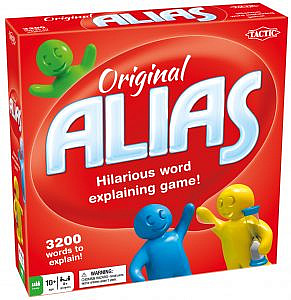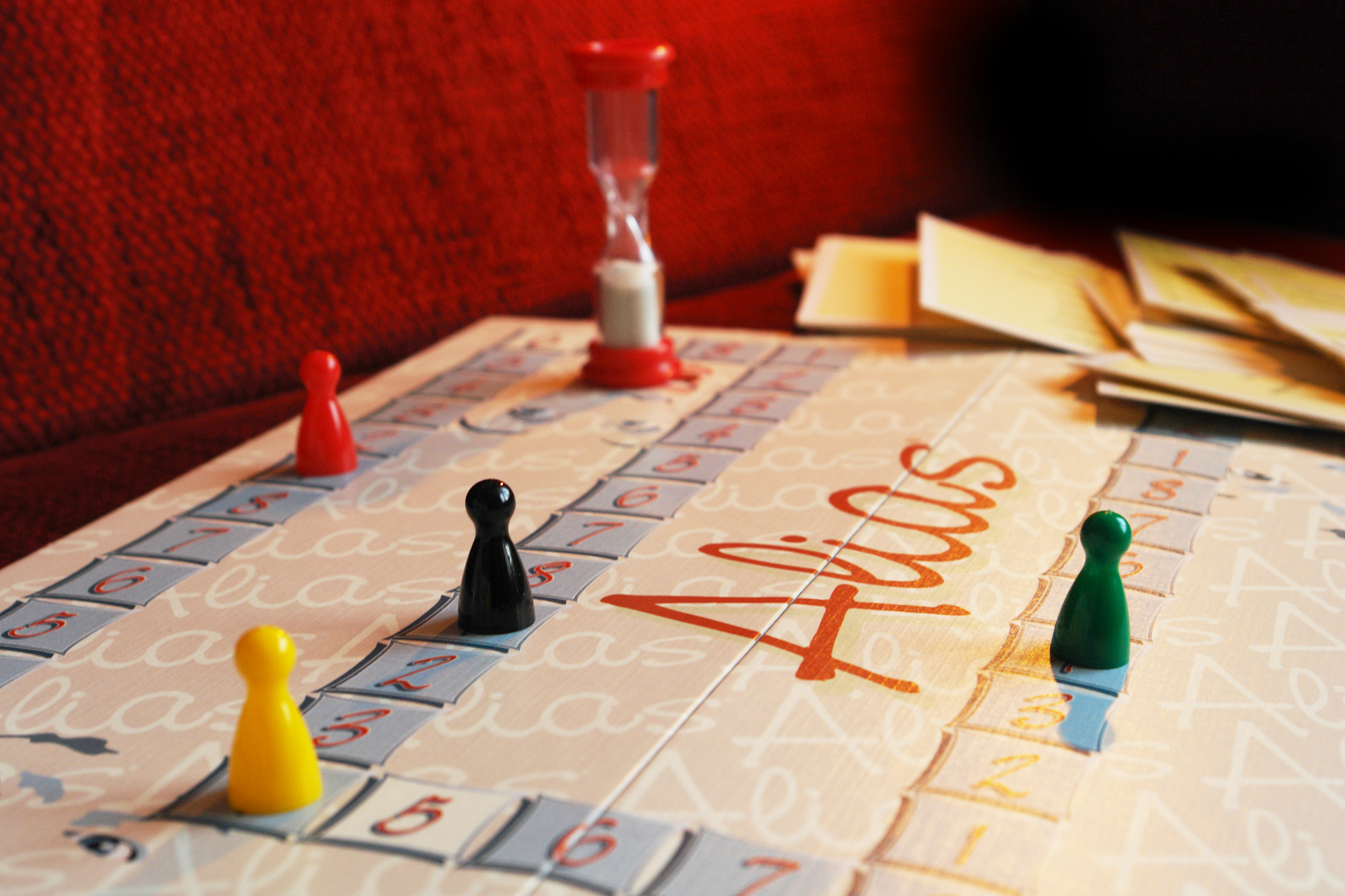
This afternoon I want to bring you the review of a game from Finland. I think it’s a good homage to Finnish board game culture. This is the game “Alias”, the great one known as Finnish “Taboo” since the rules and development of this are practically similar.
Alias is a board game that requires potential mental agility if you want to win. A game that targets all your knowledge and your way of managing the use of words in a limited way. For its development, the board needs to be placed in the centre of the table. Next, one piece for each competing team. And finally, the hourglass that will count down in each round. Starting from this preparation, the dynamics of the game is more than simple. Usually two teams compete, composed between 2 and 8 players each. To do this, they use a series of cards that contain 8 numbers. The number chosen depends on the number on the board your team’s figure is on each round.
The game starts with the figure in box number 1 and after the first round, the number of words that the team has guessed is the number of boxes that the figure advances. The board has a repetitive sequence from 1 to 8, as they are the numbers on the cards. This is how you progress on the board.

To guess words, the team takes a card, and according to the number of the board in which the figure is located, they must choose the word located in the same number of the card. One of the team players has the mission of explaining that word without saying it and through other words. The rest of the team must guess it quickly so that the explaining player can start explaining a different one.
So consecutively until the hourglass comes to an end in each round. The players rotate the position between guessing or explaining in each round until reaching the end. The team that reaches the end of it first wins, that is, whoever reaches the finish line first wins. Whoever guesses more words, the faster they can advance in each turn and the faster they will be victorious.
During my playing with my friends, I found out that this game can only be played on your good days. You have to be alert, you have to be resourceful and you have to make the most of your mental agility if you want to win. If you are tired or distracted it is very difficult to win. Which I consider to be the biggest problem with the game since you can’t play whenever you want but you have to be in very good mental condition.

I noticed this in several of my friends, but nevertheless I really enjoyed it, because I was able to quickly guess many of the words that my team were trying to explain. I think I’m better at doing this than explaining and that’s why my team won. I really enjoyed this game that was very familiar to me. It was exactly the same as playing taboo and that’s why I think learning to play is not difficult. Most people have played the game before and otherwise understanding the mechanics is very easy.
Regarding the design of the game, I must comment that it is a very simple job and that both the colours of the cards and the board and the objects to be used are very basic. There isn’t any kind of illustration and I think that makes it more ordinary compared to Taboo. Taboo is much more original and more recognizable for its illustrative design of the face and for the button with unmistakable sound. Maybe, I would use more colours and a original illustration to make Alias different and distinguished.
I don’t think this game brings anything new to the table, as it’s just an adaptation of Taboo to Finnish culture, but that doesn’t mean it’s not a good game, since it is. I’ve really enjoyed it and I’d like to recommend it to all those who want to improve their mental and verbal agility, as it certainly makes you have to think and react in a way that no other game does.
-Basic info: Designers: Mikko Koivusalo | Publisher: Broadway Toys LTD, Nelospelit, Tatic games | Release date: 1990 | Number of players: 4-12 players | Playing time: 15 minutes | Ages: +10
-Pictures source: promo pictures from the official website of the board game https://alias.eu/
